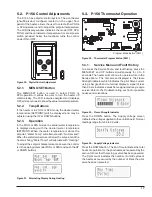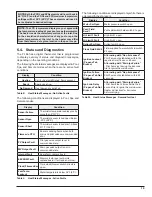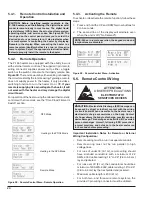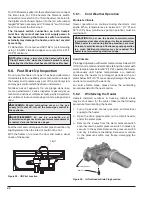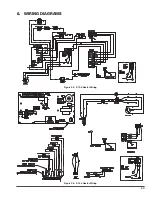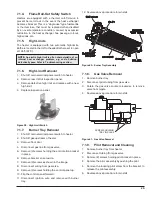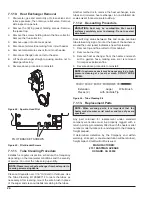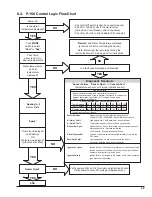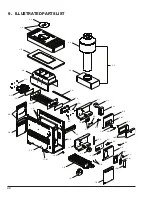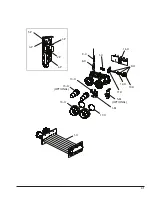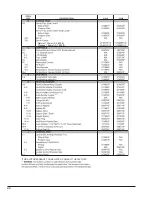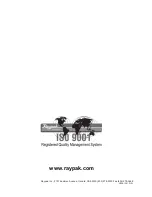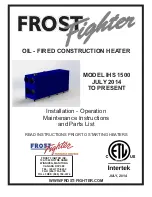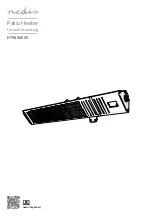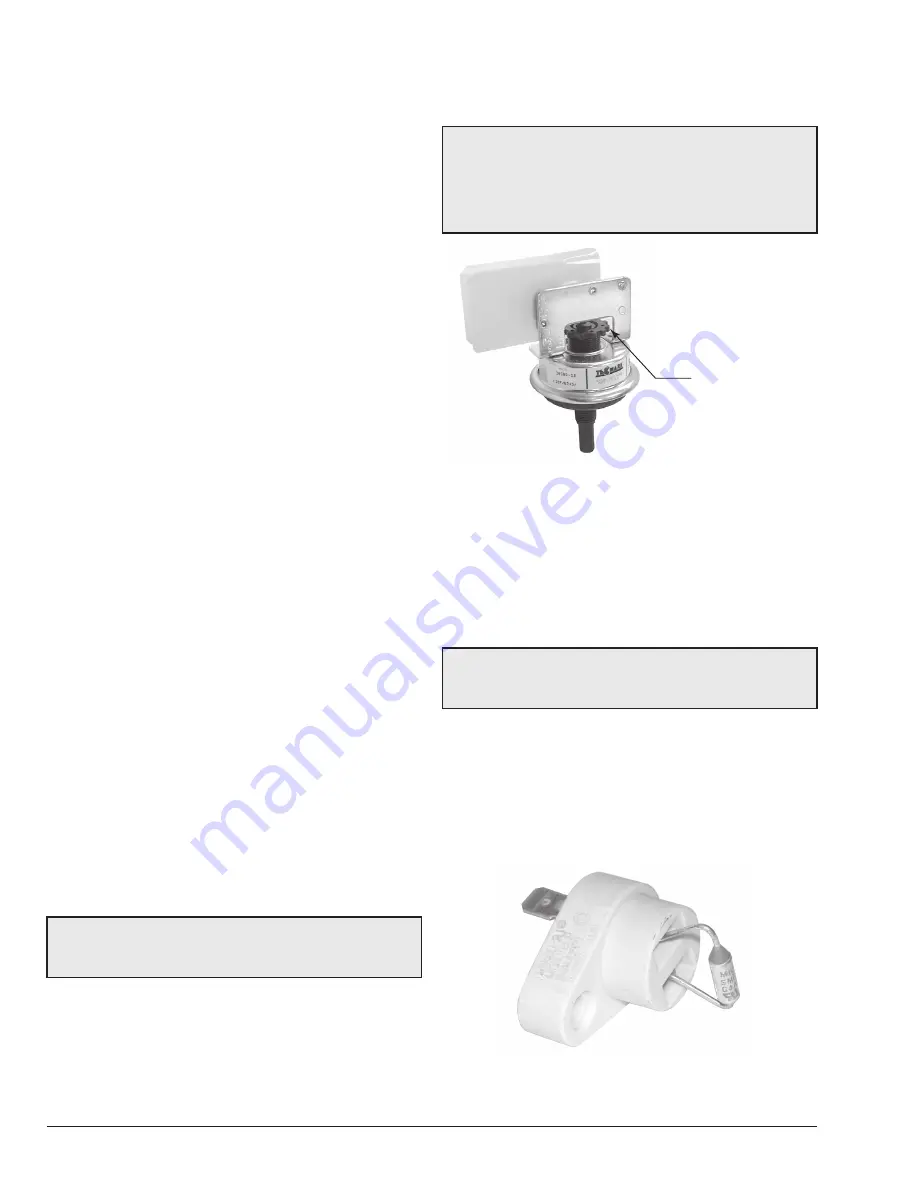
24
7. MAINTENANCE
The following preventative maintenance is to be
performed one month after start-up and semi-annually
thereafter.
1. Inspect top of heater and drafthood for soot, a
sticky black substance around finned tubes and “V”
baffles, and open flue gas passageways. Any visible
soot should be cleaned for proper operation. See
"De-sooting Procedure" on page 26.
2. Clean main burners and pilot burner of dust and lint.
3. Inspect and operate all controls, gas valve and
pressure relief valve (if equipped).
4. Make visual check of the burner and pilot flames.
Flame pattern on the main burner and pilot is
illustrated in the Post Start-Up Inspection section.
Yellow flame means restriction of the air openings.
Lifting or blowing flame indicates high gas pressure.
Low flame means low gas pressure. Should these
occur, shut the heater off and contact your gas
supplier or qualified service agency.
5. On indoor heaters, clean room intake openings to
ensure adequate flow of combustion and ventilation
air.
6. Keep area around heater clear and free from
combustible materials, gasoline and other flammable
and corrosive vapors and liquids.
7.1. Service
Verify proper operation after servicing.
S’assurer que l’appareil fonctionne adéquatement une
fois l’entretien terminé.
7.1.1. Water Pressure Switch
The water pressure switch, ensures that the heater
operates only when the filter pump is in operation. It
is located on the In/Out header. It is factory set at 1.75
PSI (12kPa) for deck-level installations. When the heater
is located below the level of the spa or pool, it may be
necessary to adjust the pressure switch to compensate
for the no-flow static head. If it is necessary to adjust the
water pressure switch, utilize the following procedure.
A
A
CAUTION:
Do not adjust the pressure switch until all
air has been evacuated from the system and the water
flow rate meets the requirements listed in Table I.
Water Pressure Switch Adjustment
1. With pump and heater on, turn adjustment knob
clockwise until a click is heard from the gas valve.
2. Turn adjustment knob counter-clockwise 1/4 turn.
3. Turn pump off and on several times. Heater should
shut off immediately. If it does not, repeat the above
steps.
NOTE:
If heater is installed outside of the limits shown, a
higher pressure rated 11 psi (76 kPa) switch may be used.
A flow switch, mounted and wired adjacent to the heater,
may be used in place of the factory mounted pressure
switch. See Illustrated Parts List for 11 psi (76 kPa) water
pressure switch.
Adjustment Knob
Figure 37. Water Pressure Switch Adjustment
7.1.2. Two-Speed Pumps
In some cases, the flow on the low-speed is insufficient
to operate the heater. This is apparent when the water
pressure switch cannot be further adjusted or if the heater
makes banging noises or shuts off on high limit. In these
cases, the pump must be run at high speed when heating
the water.
A
A
CAUTION:
Do not operate the heater without the
function of a properly adjusted water pressure switch or
flow switch.
7.1.3. Pilot Safety
The heater employs a pilot safety which closes the main
gas valve within 8/10ths of a second whenever the pilot
flame is interrupted. The pilot flame is automatically lit
when the device is powered. The heater performs its own
safety check and opens the main valve only after the pilot
is proven to be lit.
Figure 38. Flame Roll-Out Safety Switch
Summary of Contents for 106
Page 23: ...23 6 WIRING DIAGRAMS Figure 35 P 106 Heater Wiring Figure 36 P 156 Heater Wiring...
Page 34: ...34 NOTES...
Page 35: ...35 NOTES...








